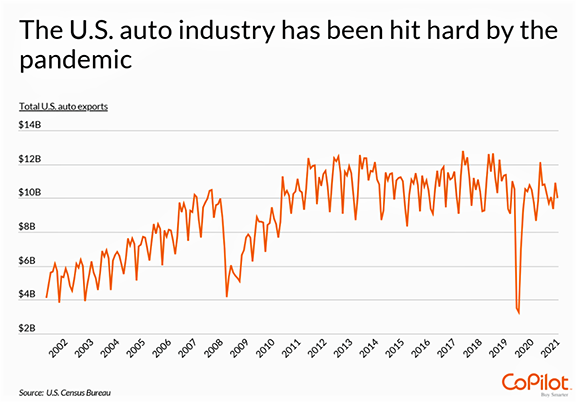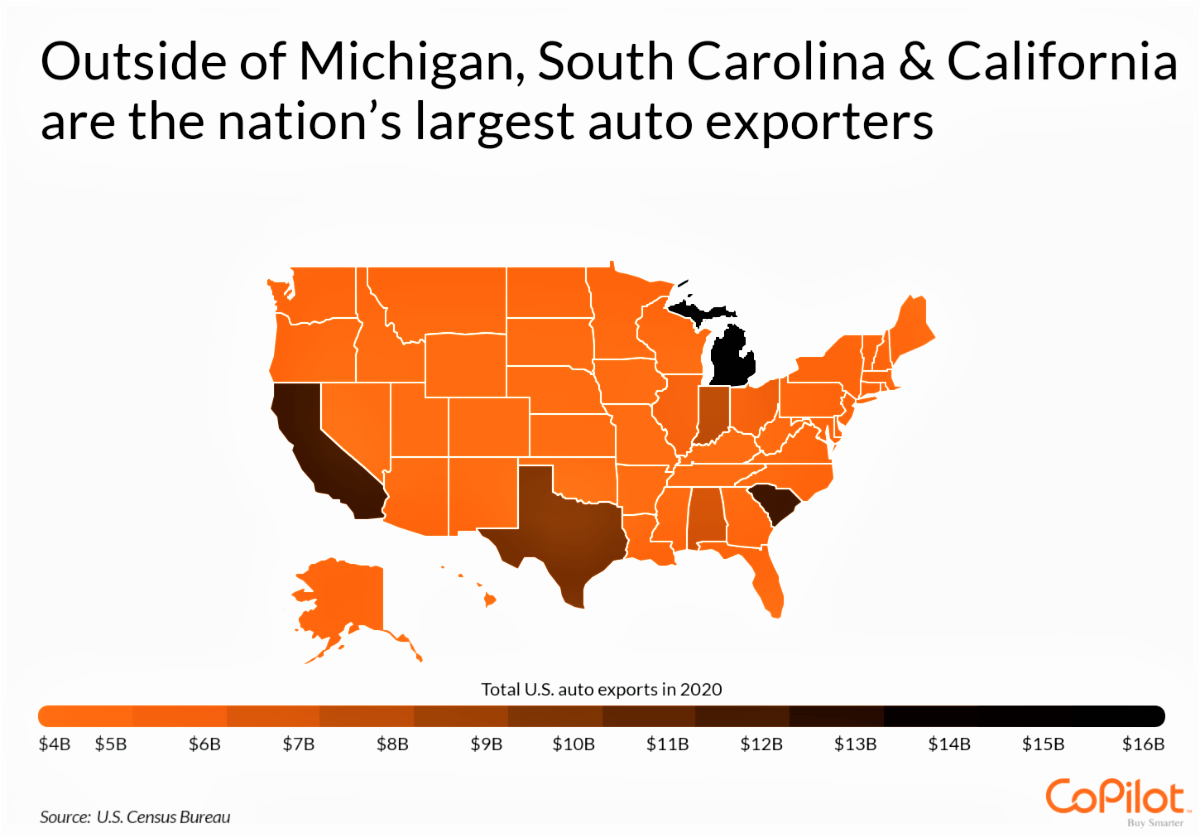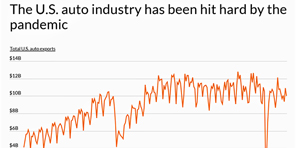SAN DIEGO, Calif. — Amid recent concerns about inflation, rising prices for new and used vehicles have received significant attention. According to recent data from the Bureau of Labor Statistics, the price of vehicles increased by 11.8 percent for new cars and a whopping 37.3 percent for used cars from December 2020 to December 2021. Even in an environment of rising prices across the economy, the spike in vehicle prices stands out.
Many observers have pointed to ongoing challenges with the supply chain and a tight labor market as factors that are limiting supply and leading to an increase in prices. A shortage of semiconductor chips and other essential car components has hampered auto production, while backlogs at major ports are making it difficult to transport the vehicles and parts that are being produced. Manufacturers have been struggling to staff plants at full capacity with the tightness of the labor market, a situation worsened by the surge in cases from the Omicron variant. As a result of these factors, industry experts estimated that the industry could see a shortfall of about 8 million vehicles.
While many of these challenges are coming to a head now, the auto industry has struggled throughout the pandemic. At the beginning of the pandemic in early 2020, total U.S. auto exports experienced their biggest drop since the Great Recession with the onset of COVID shutdowns. As more drivers stayed home and manufacturers operated at more limited capacity, exports fell from approximately $10.5 billion in March 2020 to around $3.2 billion two months later. While monthly exports rebounded to more than $10.5 billion again by August, the industry has continued to struggle to exceed pre-pandemic levels since. In each of the first 11 months of 2021, export figures from U.S. automakers trailed the figures for the corresponding month in 2019, despite surging demand.

These ongoing struggles naturally pose greater challenges for states whose economies depend more heavily on car and auto part manufacturing. Michigan, the traditional home of the U.S. auto industry and home to giants like Ford and GM, accounted for nearly $16 billion in auto exports in 2020. South Carolina, which is home to major manufacturing facilities for BMW, Michelin, and a number of other auto parts companies, and California, which is a major center in the burgeoning electric vehicle market, are also large exporters.

While these major exporting states have been hard-hit as a result of the pandemic and could face more challenges in the near future, many other states have seen even greater declines. A total of 43 states had lower auto exports in 2020 than in 2019, but the size of the decline ranged from a 2.3 percent reduction all the way to a 51 percent decrease in exports. And the characteristics of a state’s auto industry did not spare any states from these difficulties: the states with large export losses experienced declines regardless of whether their industry concentrated in passenger vehicles, tractor trailers, motorcycles, or auto parts.
The data used in this analysis is from the U.S. Census Bureau’s Foreign Trade Data. To identify the U.S. states whose automotive industries were hit hardest by the COVID-19 pandemic, researchers at CoPilot calculated the percentage change in state automotive exports between 2019 and 2020. Researchers also calculated the percentage of total state exports accounted for by the automotive industry, as well as the automotive sector responsible for the most exports in 2020.
The analysis found that from 2019 to 2020, Missouri experienced an 8.7 percent decline in its auto industry exports. Here is a summary of the data for Missouri:
- Percentage change in auto exports (2019–2020): -8.7 percent
- Total auto exports (2020): $2,428,573,195
- Total auto exports (2019): $2,660,634,929
- Auto exports as a share of total state exports: 19.0 percent
- Largest auto sector: Motor Vehicles for Goods Transport
For reference, here are the statistics for the entire United States:
- Percentage change in auto exports (2019–2020): -21.1 percent
- Total auto exports (2020): $105,560,728,656
- Total auto exports (2019): $133,834,667,670
- Auto exports as a share of total state exports: 7.4 percent
- Largest auto sector: Passenger Vehicles (Internal Combustion)
For more information, a detailed methodology, and complete results, you can find the original report on CoPilot’s website: https://www.copilotsearch.com/posts/states-whose-auto-industries-were-hit-hardest-by-covid-19/

